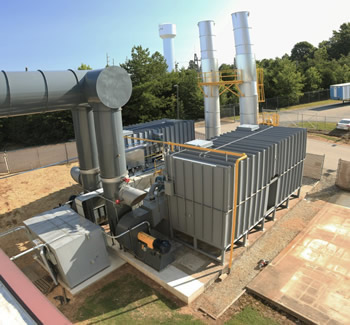 A Regenerative Thermal Oxidizer (RTO) is an industrial system that destroys volatile organic compounds (VOCs) in process exhaust air before it exits the stack and pollutes the environment. Historically, RTOs have been used extensively in industries producing a high waste stream containing low VOC concentrations such as paint manufacturing, surface coating and finishing processes, advanced materials and chemical manufacturing, wood finishing, printing and food processing, among others.
A Regenerative Thermal Oxidizer (RTO) is an industrial system that destroys volatile organic compounds (VOCs) in process exhaust air before it exits the stack and pollutes the environment. Historically, RTOs have been used extensively in industries producing a high waste stream containing low VOC concentrations such as paint manufacturing, surface coating and finishing processes, advanced materials and chemical manufacturing, wood finishing, printing and food processing, among others.
How an RTO Works at a Glance
While the process itself is rather complex, at a high level, Regenerative Thermal Oxidizers:
- force process exhaust fumes in one direction over a passive heat exchanger
- pollutants pass through ceramic media, are mixed, and held at elevated temperatures in the combustion chamber
- thermal oxidization occurs: a chemical reaction of the air pollutant with oxygen at elevated temperatures
- this reaction destroys the VOC emission in the air stream by converting it to CO2, H2O and heat
- a stream of clean (cooled) air is released through the exhaust stack out to the atmosphere.
RTO’s destroy air pollutants at temperatures ranging from 815 °C (1,500 °F) to 980°C (1,800 °F). Thermal energy recovery (TER) efficiencies range from 85% to 97%. Air pollutant destruction efficiencies of 99% can typically be guaranteed.



